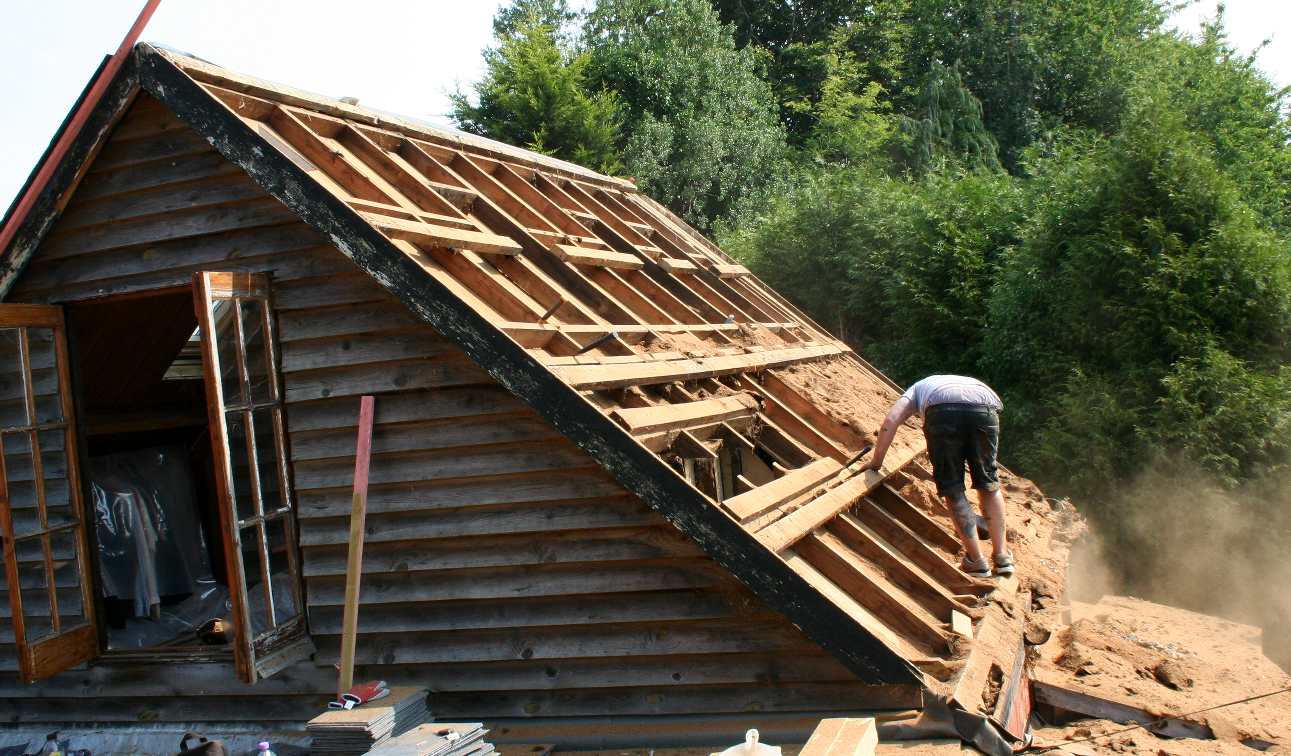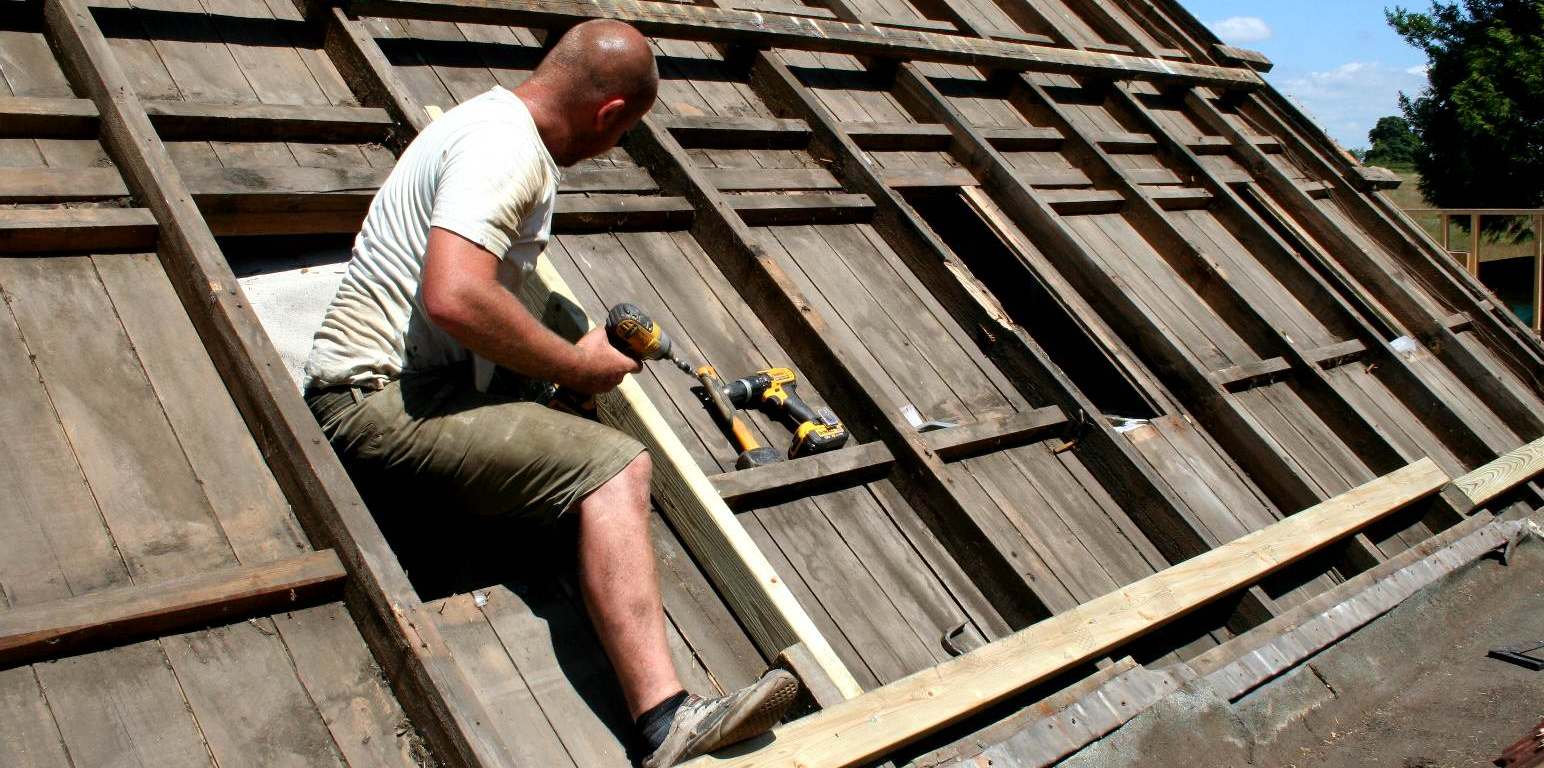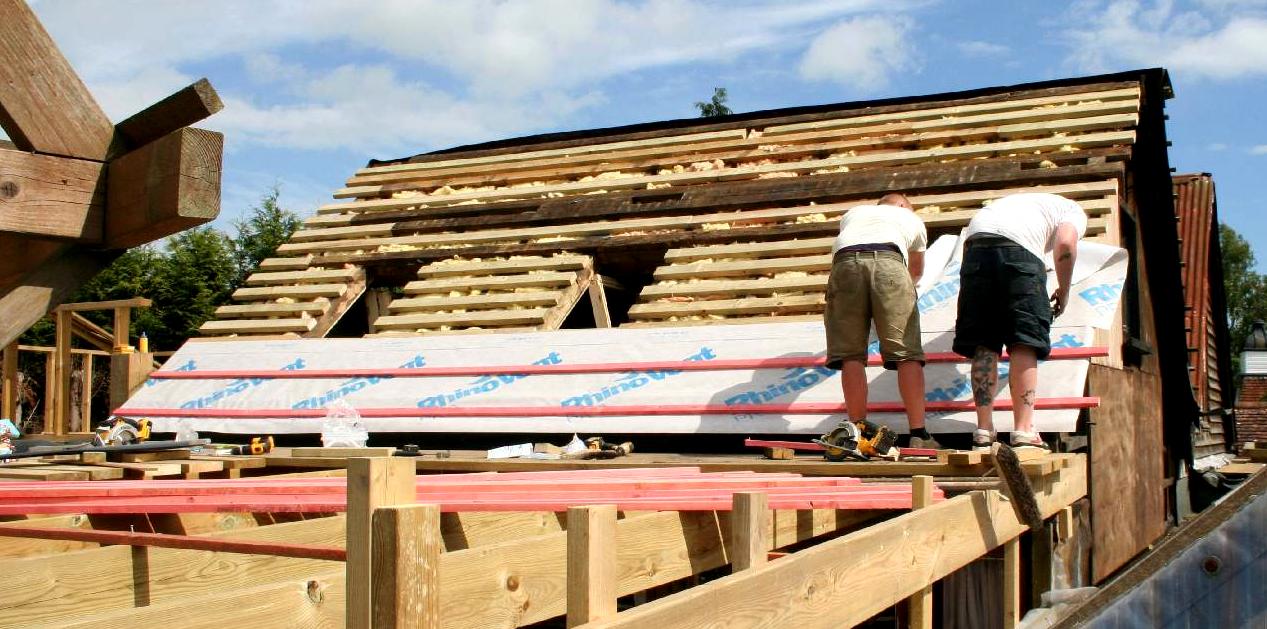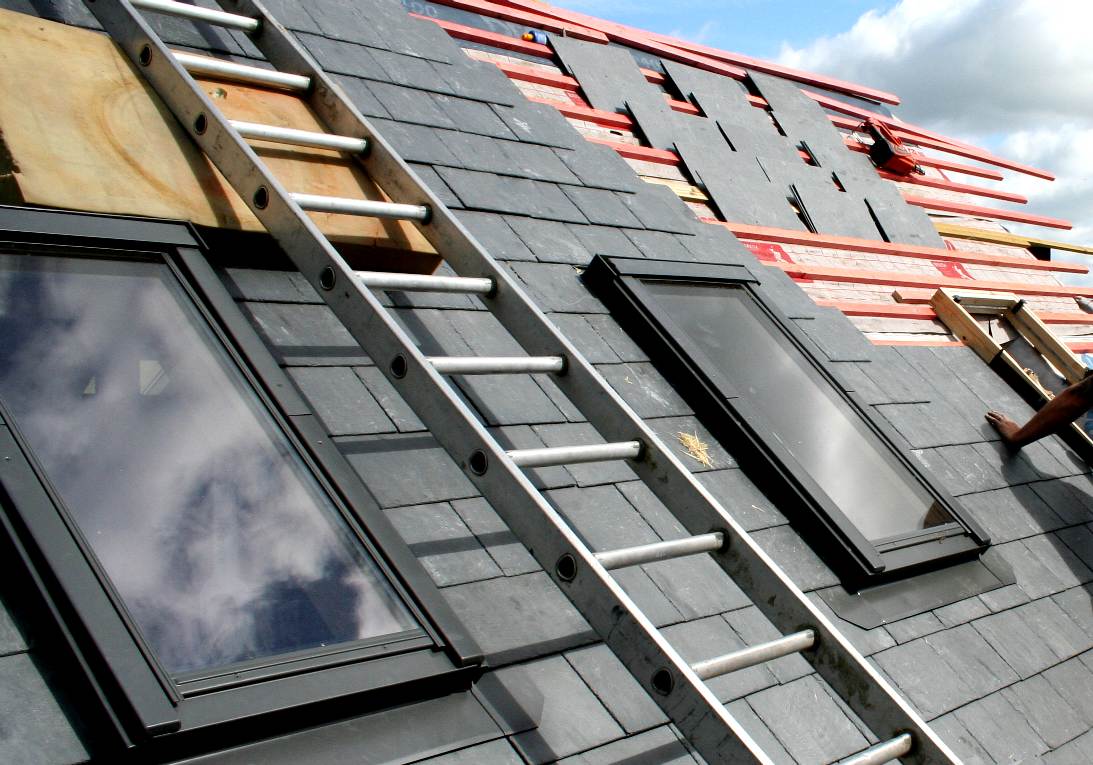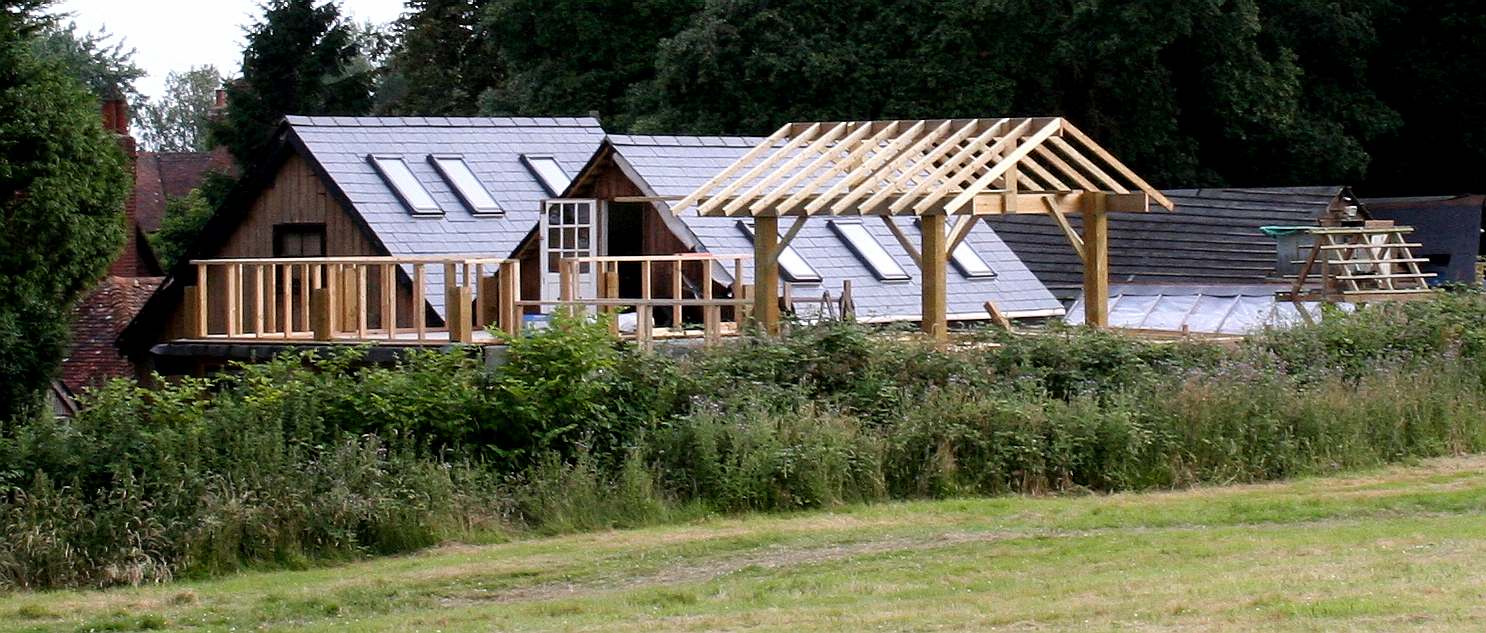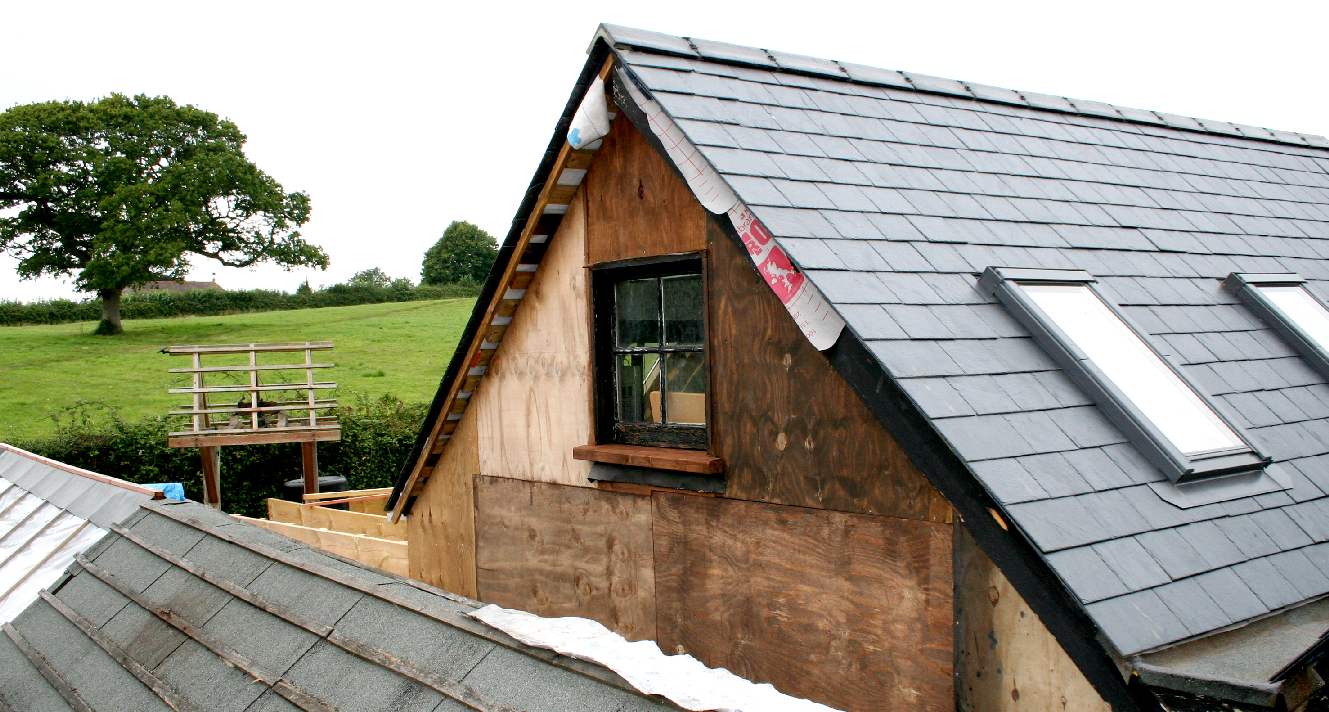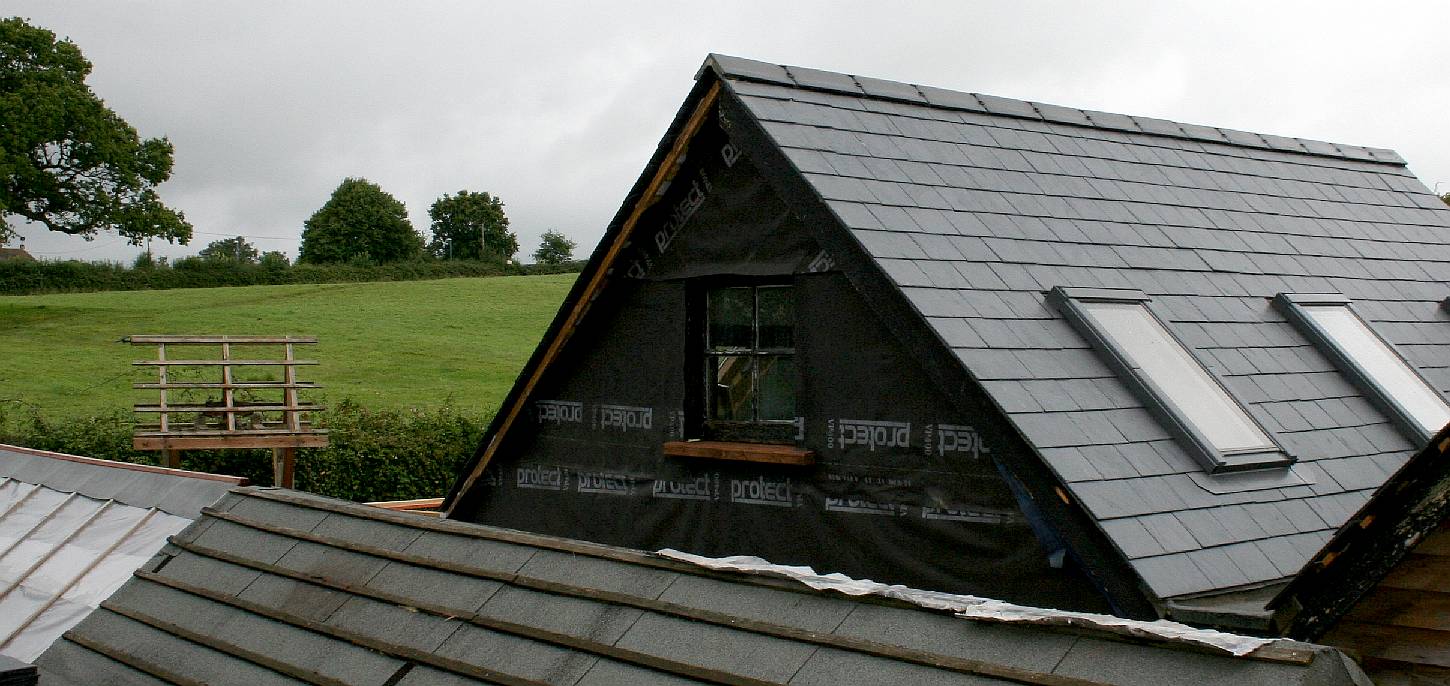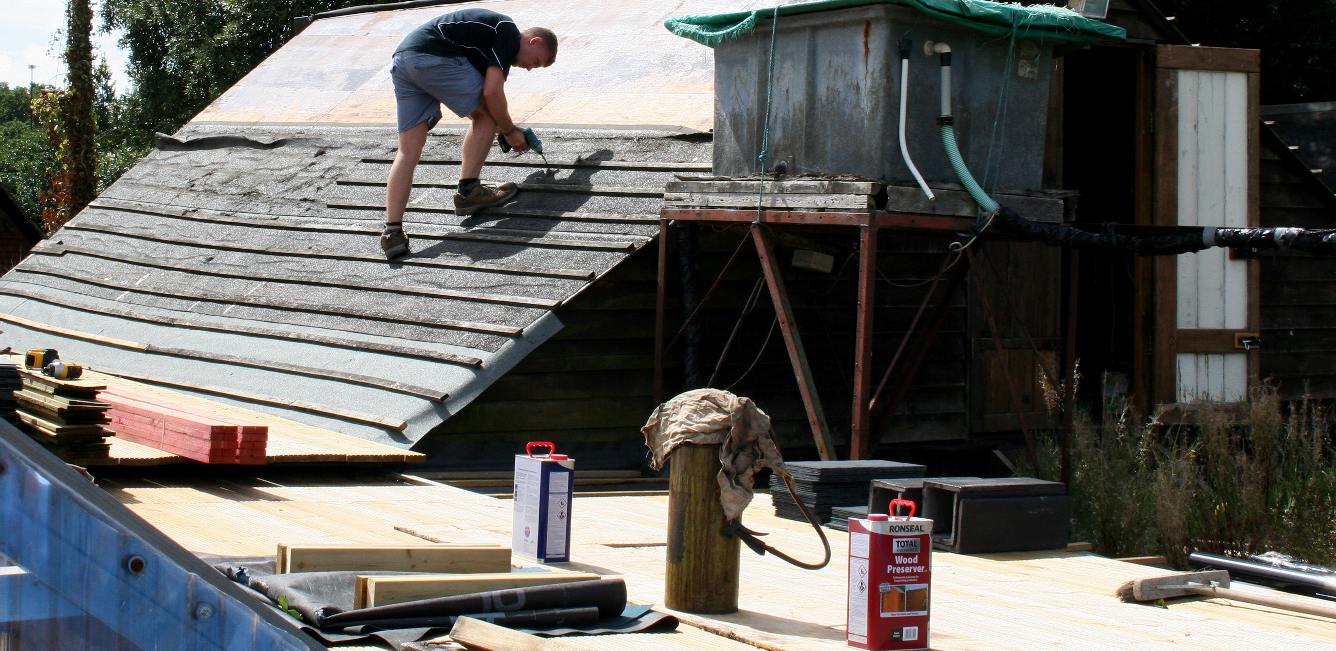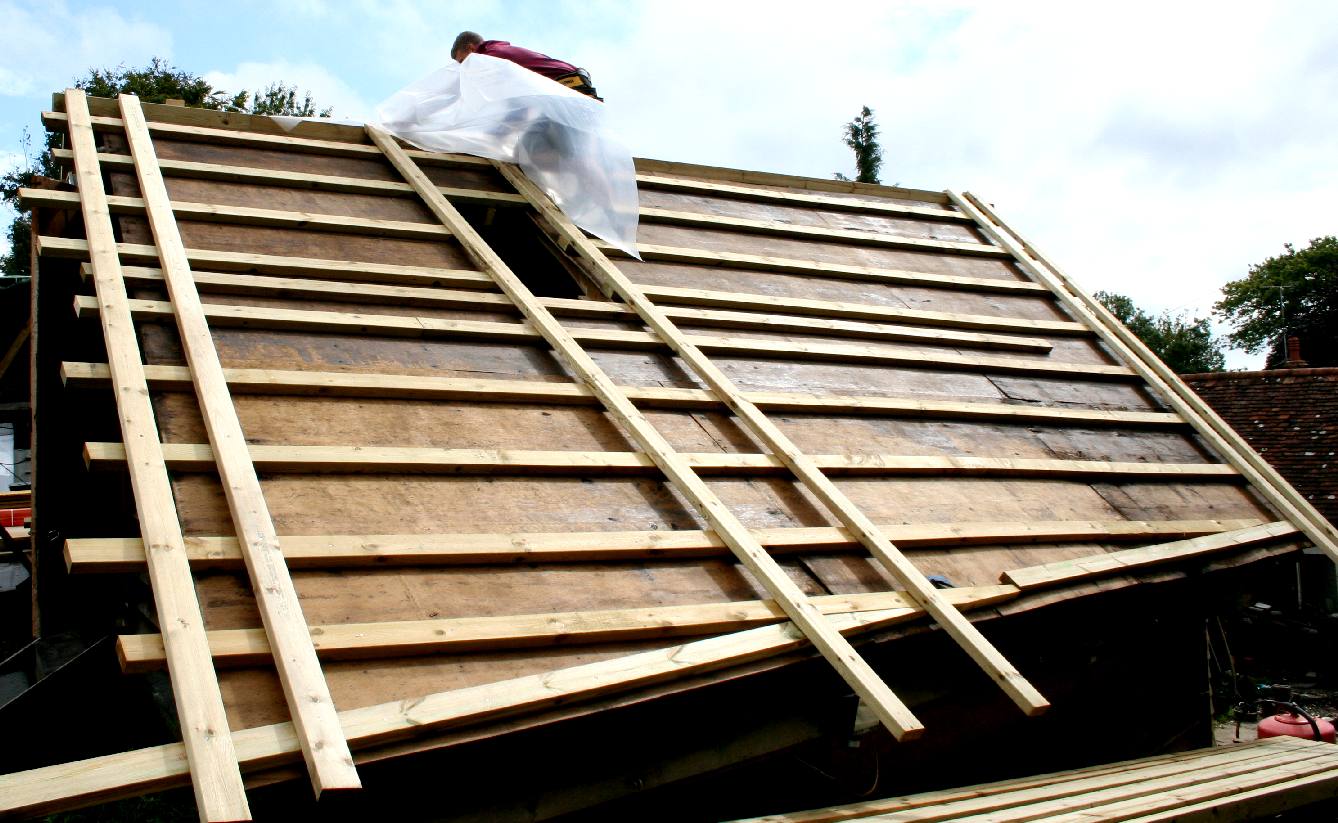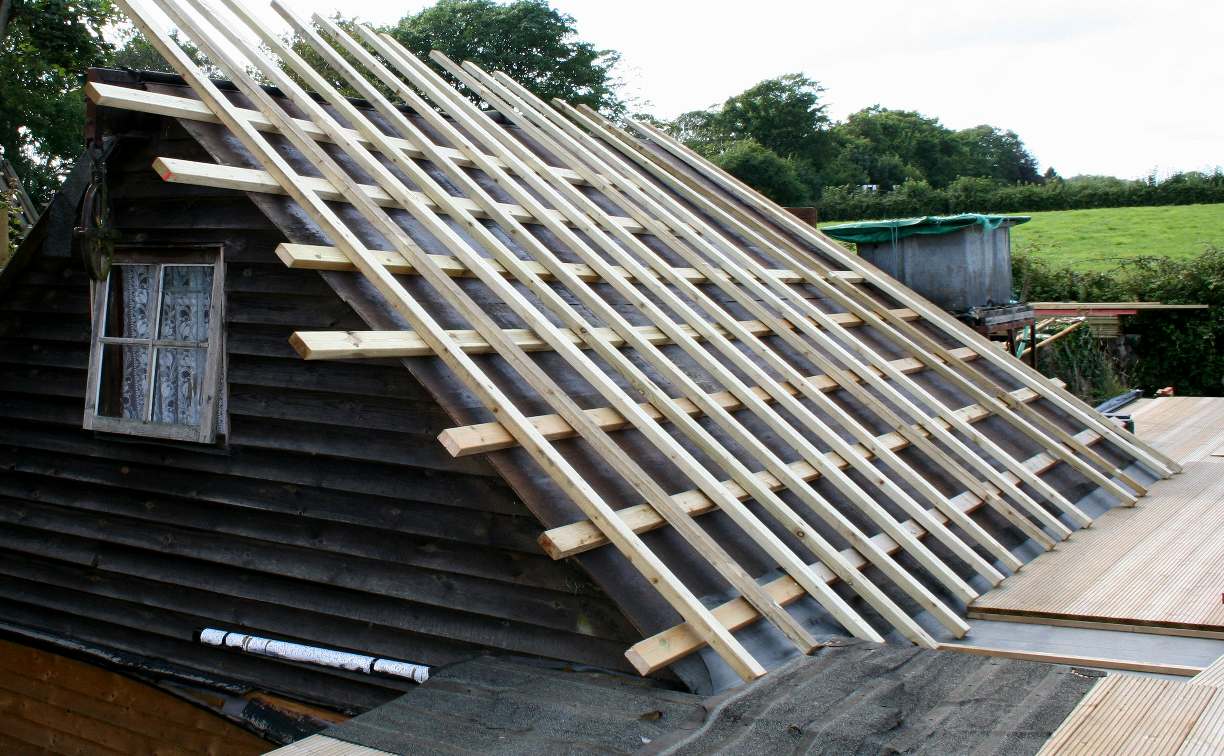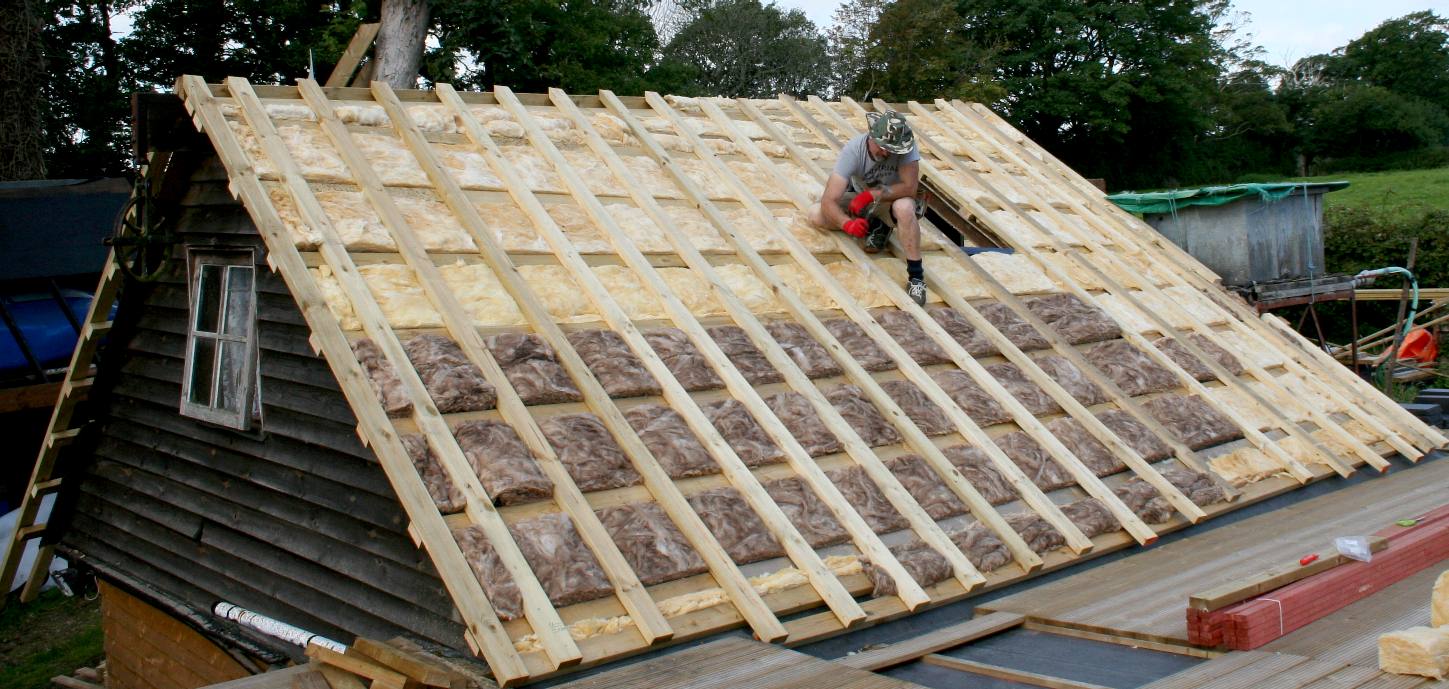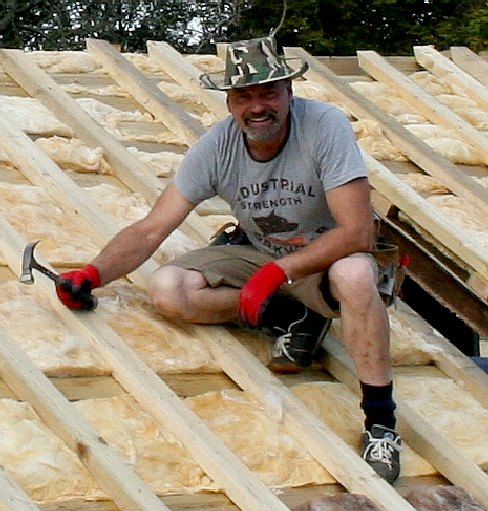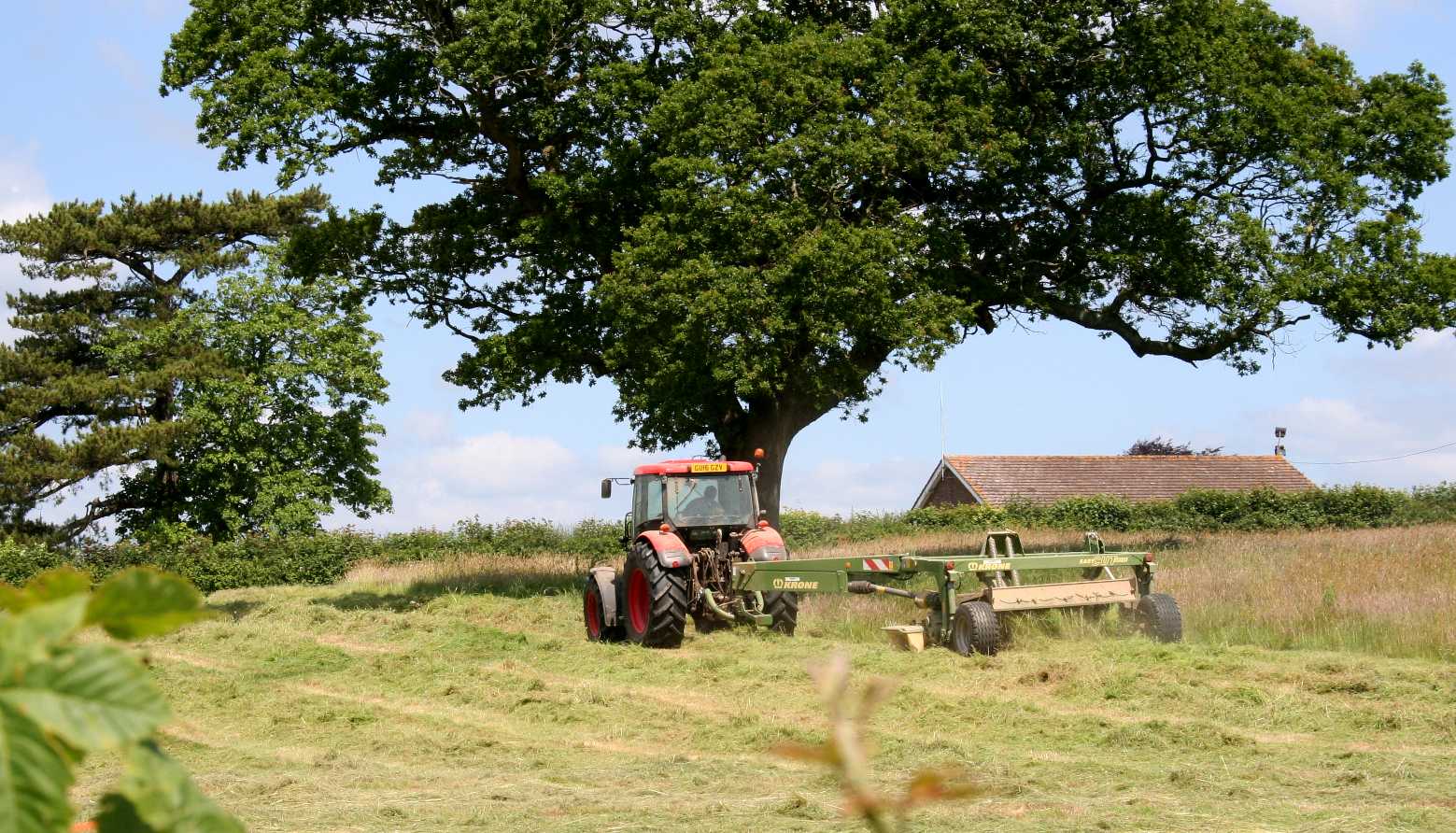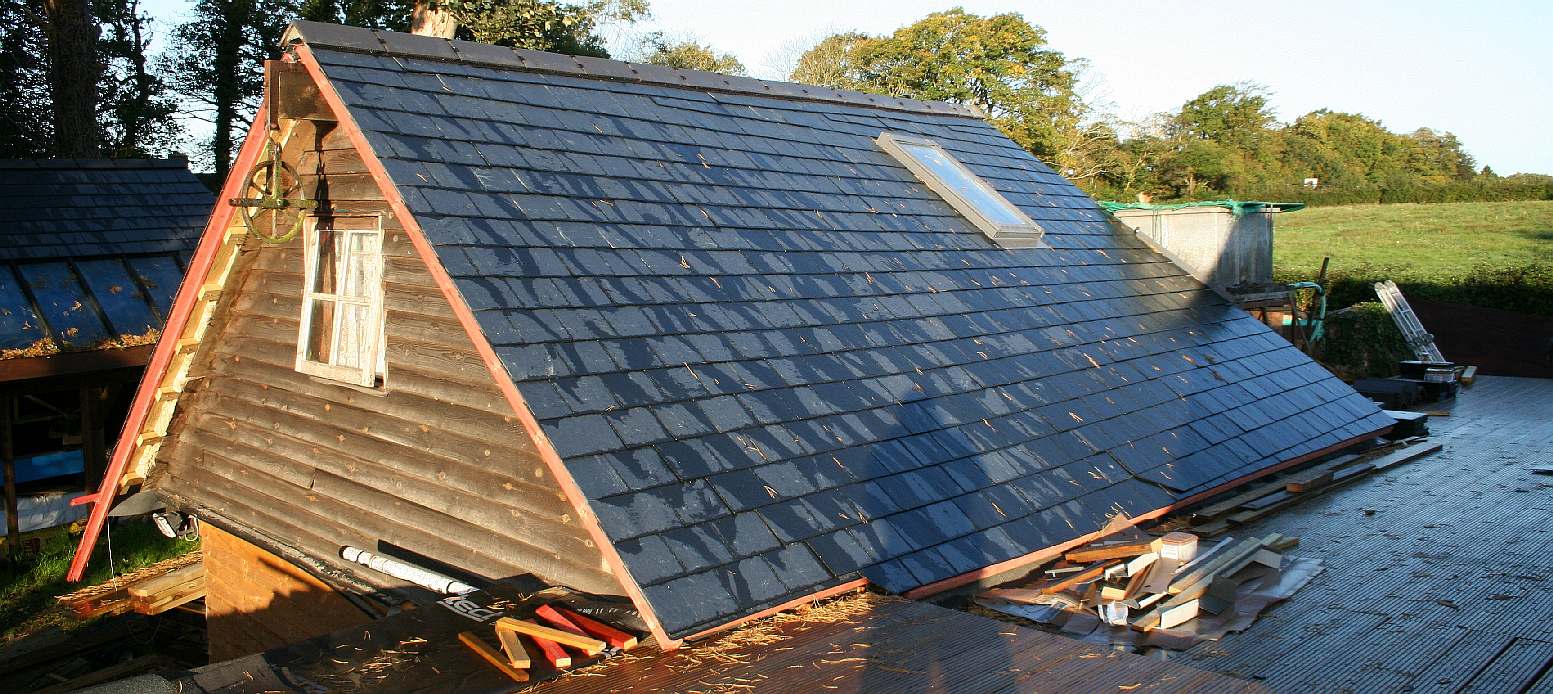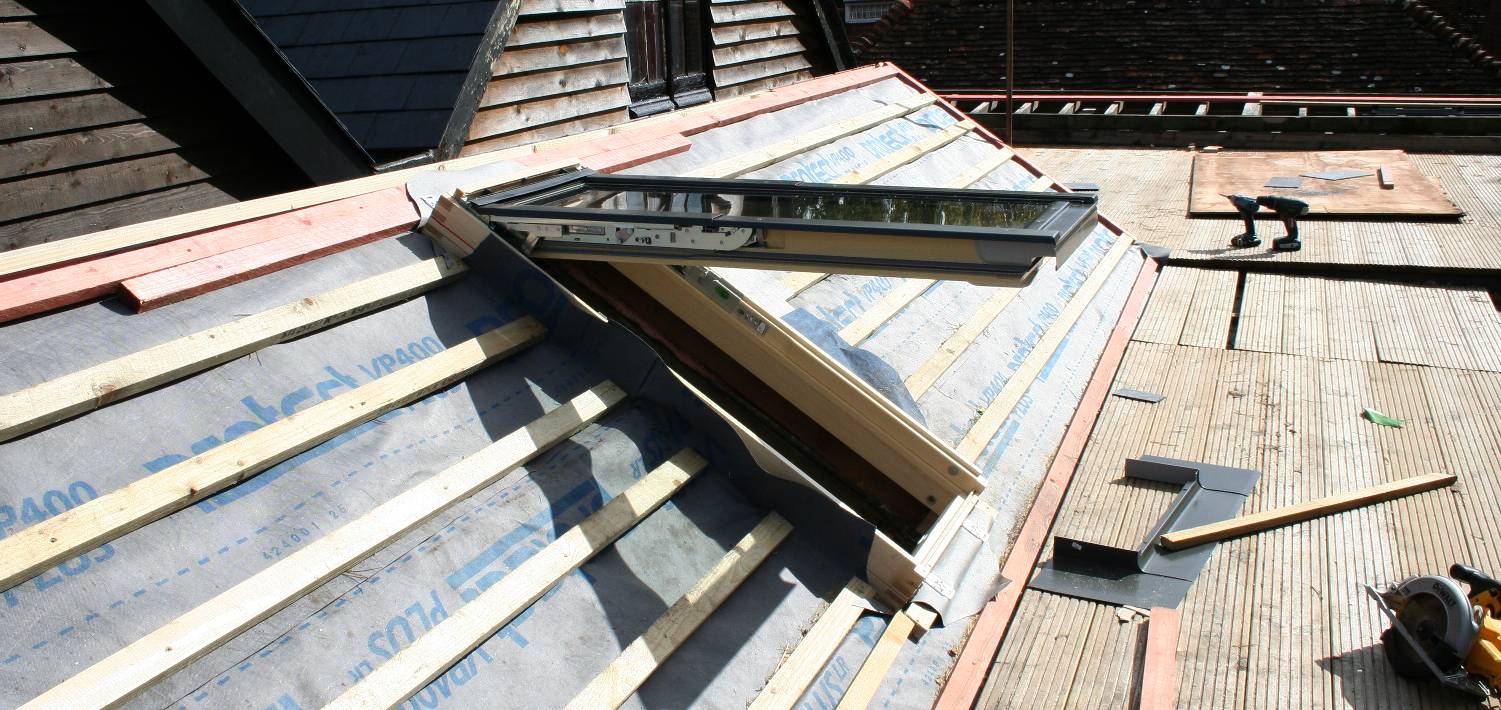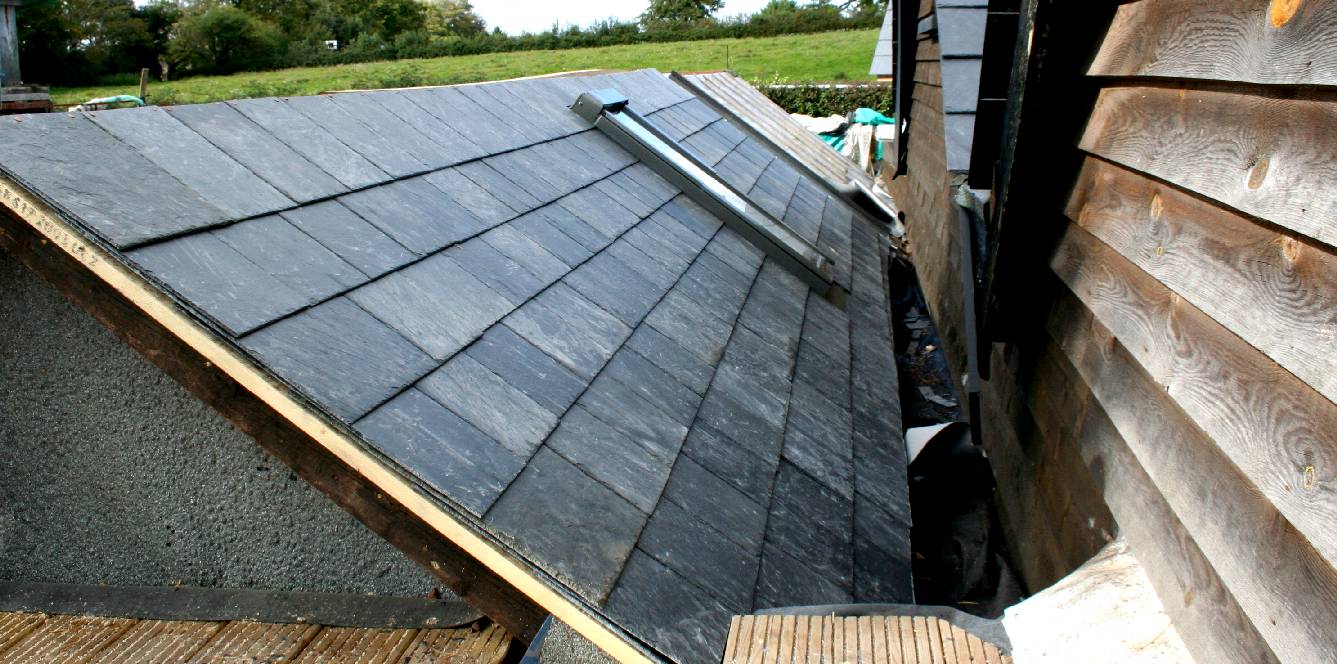|
SLATE ROOFS HERITAGE CONSERVATION
|
|
|
DUSTY - The roof voids were filled with sawdust for insulation. Apart from a few affected areas, the rafters and purlins were in remarkably good condition, most likely from the combination of sawdust and tar impregnated matting that we presume was some king of underfelt for the WWII corrugated iron. The smell and slow release of the volatile compounds in the tar may have helped to ward off insect infestation - and, it appears - mummify two squirrels. Copyright photograph June 2017 all rights reserved Lime Park Heritage Trust.
CONSERVATION
Being the trustees of a historic building of this stature, repairs to the wooden building have to be carried out to the very highest standards. A good solid roof is one of the most important considerations when it comes to protecting valuable heritage sites, and for that reason only the finest quality slate would do. But, before we could get to the slating, a considerable amount of sawdust had to be removed for repairs to a rafter or two and of course the old World War Two corrugated iron needed to be removed.
Where this building has survived two world wars, there is a mix of roofing technology in that 4"x2" purlins were overlaid onto the rafters. Instead of destroying this phase of use of the building we decided to conserve that element also by beefing up the purlin quotient and then treating the roof in the normal way with a breather membrane and then battens at 200mm spacing (the gauge) as is required for 500mm x 250mm slates. This is a bit belt and braces and much more expensive than simply repairing the roof, but this is a very rare building. All of the timbers were liberally soaked in preservatives to prevent wet and dry rot and insect attack.
REPAIRS - Only a couple of rafters were in need of attention, but the corrugated iron was paper thin in some areas where it had either rusted through or was about to rust through. The slate roof had not come a moment too soon. It did not help matters that sycamore sap had accelerated the rate of decay of the old iron where the zinc from being galvanized was eaten away by the organic decay. Here a roof void is seen cleaned of sawdust. A leaf blower helped to remove much of the sawdust once the bulk was manually carted away. Copyright photograph June 2017 all rights reserved Lime Park Heritage Trust.
BREATHER - In this picture you can see how we beefed up the roof with additional purlins to the original, using the same spacing as would be required for slates. Our timber was supplied by Stamco in Eastbourne and Hastings. Copyright © photograph June 2017. You will need the permission of Lime Park Heritage Trust to use this picture. All rights reserved.
BENEFICIAL USE
One way of ensuring the survival of heritage assets is to give them a reasonable and beneficial use. Typically, this will be for residential conversion, or light industrial use. Lime Park Heritage Trust is proud to be able to offer a home to a research project that could help to feed the world as population growth may outstrip the ability of land to provide food for upwards of 9 billion people. The building may also host conferences on ocean research in tandem with the research that is likely to take place in the coming years.
BATTENS - With the breather in position the battening takes over, allowing for the skylights to be inserted. We used a nail gun and treated wood screws to acheive a really solid fix. Copyright photograph June 2017 all rights reserved Lime Park Heritage Trust.
This building has been part of the landscape for over 100 years and thanks to the efforts of all those who helped the Trust to complete this project, is likely to be part of the landscape for another 100 years. If not for the perseverance of key players over the last 30 years this building would have long ago fallen over and rotted away. When it was discovered in 1981/2 it was leaning over dangerously where internal walls had rotted at the base interface with the brick foundations. Sycamore trees, ivy and holly were in the process of engulfing the complex. Since then fresh damp proof courses and repairs to the partitions, with liberal treatments, has kept the building from falling over. Substantial tree works were needed to restore the site to a situation where this attractive building can once again breath a sigh of relief and be seen and enjoyed by the hundreds of people who pass by every year.
SITE MANAGEMENT - An often overlooked fact is that effective site management can help to make a demanding task less difficult. In this case the site manager had arranged for decking to be completed and other works that allowed easier access, to include a place to stack the slates conveniently. Another thing to bear in mind is ordering in sequence so that the site does not become overloaded and unmanageable. Copyright photograph June 2017 all rights reserved Lime Park Heritage Trust.
SKYLIGHTS - We were very impressed with the quality of these double glazed units that are made of solid pine with substantial steel and aluminum fittings and guaranteed for 20 years. Copyright © photograph 30 June 2017. You will need the permission of Lime Park Heritage Trust to use this picture. All rights reserved.
SUMMER HEAT - Over two of the hottest weeks on record, 4 men toiled for eight days in the blazing sun to take off the WWII corrugated iron, temporary felt, replace any damaged or rotten timbers and fit some of the finest slate that we have seen in a long while - with thanks to Ashbrook Roofing Supplies in Derbyshire. Ashbrook Roofing did us a cracking deal on 250 x 500, 375 x 500 slates and matching ridge tiles to capture the rural industrial element of the building. Thanks Bez. We faithfully followed the original design, including the interesting position of the skylights, that are now very high quality double glazed high security units. That is the main generating rooms sorted, save for facias and soffits.
There are three more roofs to match in with those of the main generating buildings. The Trust receives no financial help from Historic England, the Heritage Lottery Fund, and absolutely nothing at all from Wealden District Council - a council that to all intents and purposes appears to many to have done its best to prevent the restoration of this important historic asset. Copyright © photograph 30 June 2017. You will need the permission of Lime Park Heritage Trust to use this picture. All rights reserved.
WINDOW SILL - The original on the left is a piece of pine that is over 100 years old and very much the worse for wear. Our craftsmen fashioned a new sill using solid treated timber, then re-treated it with Ronseal preservers - and this time fitted it with weatherproof flashings top and bottom. It should last another hundred years or more after priming and painting. Where the original had rotted through, rainwater could trickle down the inside of a wall to drip annoyingly in the canteen below - now cured. How that was possible is a mystery. Copyright © photograph 20 July 2017. You will need the permission of Lime Park Heritage Trust to use this picture. All rights reserved.
TREATED - That looks a whole lot better. We unleashed another gallon of preservative on the frames before fitting. There is still some repair work to complete, but this window is now weather tight. Copyright © photograph 20 July 2017. You will need the permission of Lime Park Heritage Trust to use this picture. All rights reserved.
PLYWOOD INSULATION - This gable end wall is now reinforced with plywood that has been treated on both sides. The extra layer of wood, plus fibreglass insulation will mean a much warmer building in the winter, especially with double glazing in the roof lights. Copyright © photograph 20 July 2017. You will need the permission of Lime Park Heritage Trust to use this picture. All rights reserved.
BREATHER - Here you can see the breathable roofing felt that prevents driven rain from penetrating past the feather edge boarding during storms and high winds. Of course the plywood would do that anyway, but you cannot be too careful when restoring a historic building. We used the VP400 Protect fabric that is micro permeable, allowing moisture out, but not water in. Next comes the treated weather boarding and after that new facias - all to be treated of course, prior to priming and painting in a durable black alkyd resin finish. Copyright © photograph 20 July 2017. You will need the permission of Lime Park Heritage Trust to use this picture. All rights reserved.
RONSEAL - When tacking the third range, the first stage was to remove the old felt - a temporary covering - and to treat the plywood underneath. For the most part this plywood was in reasonable condition, but needed spraying with a good quality wood preserver, rot and insect proofer, if the Museum is to have a long service life in between maintenance bouts. Roofs must breathe to let out any trapped moisture and prevent water ingress. Moisture will come from the accommodation areas of the buildings and will be trapped where it can promote fungal attack, unless you can prevent that. Copyright © photograph 8 August 2017. You will need the permission of Lime Park Heritage Trust to use this picture. All rights reserved.
STUDIO RAIN PROTECTION - The weather forecast was accurate and bang on time the heavens opened up two days in a row with flash floods. This is the third large roof in the main building complex. There is another small roof to go after this one is complete and of course we must match in the Museum roof, or it will look incongruous. Copyright © photograph 9 August 2017. You will need the permission of Lime Park Heritage Trust to use this picture. All rights reserved.
C24 - You can't build without materials - and a lot of it. In the old days timber beams were hewn with adzes by teams of men and cut with hand saws. Because of this there was almost full employment, but today we are mechanized and one day robots will do almost everything for us - or so they say. Today all we need to do is pick up the phone to our friendly timber supplier in Eastbourne and their considerate drivers unload by crane just where we need it. With Google developing driverless cars, one day the driver may also be redundant. Copyright © photograph 11 August 2017. You will need the permission of Lime Park Heritage Trust to use this picture. All rights reserved.
RAFTERS - This is an unusual character building that is unique, where the footprint is an irregular rhombus, rather than a regular square or oblong. The slaters' will have a lot of fun sorting out the angles to blend into a level ridge and there is sure to be some colorful language on site at that time. Copyright © photograph 11 August 2017. You will need the permission of Lime Park Heritage Trust to use this picture. All rights reserved.
COZY - Snug as a bug under a thick quilt of insulation but still with room to breathe. Repairs to roofs do not normally require building regulations, but just to be on the safe side, we made sure that the improvements exceeded specifications. This roof had been modified internally for some time, so is/was proven to be strong enough without the reinforcing effect of another layer of purlins and rafters. Copyright © photograph 11 August 2017. You will need the permission of Lime Park Heritage Trust to use this picture. All rights reserved.
SERIOUS BUSINESS - Well yes, roofing is potentially dangerous and the insulation must be handled with care. Indeed, when laying this loft-wool face masks and gloves should be used. If you take precautions, using scaffold planks and towers and work in pairs roofing can be fun and very rewarding. Working in pairs means that if there is an accident, someone in on site to call for help. You might look like the cowboy Clint Eastwood, but there is no need to act like one. Copyright © photograph 11 August 2017. You will need the permission of Lime Park Heritage Trust to use this picture. All rights reserved.
STORM CLOUDS - There may be trouble ahead with climate change causing flooding and global warming. With a good roof overhead to keep out the damp, we can concentrate on other matters, such as heritage and ecological conservation. Copyright © photograph 11 August 2017. You will need the permission of Lime Park Heritage Trust to use this picture. All rights reserved.
MAKING HAY - The heartwarming sight of a British farmer mowing tall grass in the field adjacent to Herstmonceux Museum - the aroma of which is pleasing to the senses and unmistakably Sussex county, from the unique mix of fauna. This grass was sun dried and baled in the space of a few hot days in the summer of 2017. Don't you just love the countryside. Copyright © photograph June 2017. You will need the permission of Lime Park Heritage Trust to use this picture. All rights reserved.
SEPTEMBER - Roofing continues with the slate adding to the semi-industrial look of the building as it would have been in 1900 when the electricity generating business started the pioneering trend where rich country owners like Rudyard Kipling, who wanted the latest incandescent light bulbs so badly that they were prepared to install their own generating equipment. Copyright © photograph September 2017. You will need the permission of Lime Park Heritage Trust to use this picture. All rights reserved.
NEARLY THERE - The slating is complete on this roof of the building. The facias and soffits are next. Copyright © photograph September 2017. You will need the permission of Lime Park Heritage Trust to use this picture. All rights reserved.
OCTOBER - This is the last roof to complete, a smaller area over what was the old garage for a 1906 Armstrong Sideley car. The are is now used as a kitchen/canteen. It was a challenge to replace the 2nd World War, single pane openings with these Fukro units that feature double glazing, toughened and laminated glass and a really solid wooden frame that will add to the strength of the roof. Copyright © photograph September 2017. You will need the permission of Lime Park Heritage Trust to use this picture. All rights reserved.
GOOD GULLY - It was always tight when cleaning this gully. It was imperative to repair the end gable wall, plywood, breather and feather-edge board that section, where, once the slate is on the roof you have to be very careful not to crack any of the slates of suffer possible leaks. Repairs are possible, using lead straps, should the worse come to the worse. The ridge tiles will complete this roof. Copyright © photograph September 2017. You will need the permission of Lime Park Heritage Trust to use this picture. All rights reserved.
LINKS & REFERENCE
http://www.ashbrookroofing.co.uk
|
|
|
This website is Copyright © 2023. All rights reserved. All other trademarks are hereby acknowledged. Contact Us www.cherrymortgages.com
|
